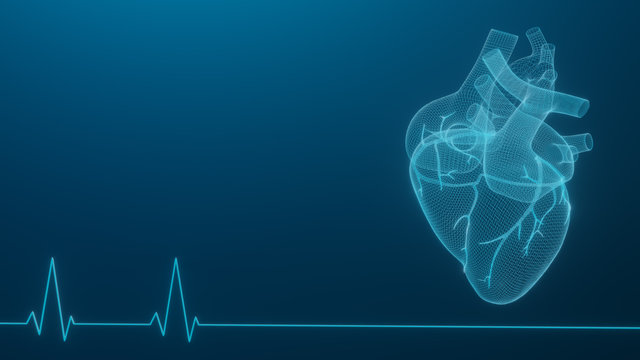Comprehending the Value of Cardiology in Modern Health Care Solutions
Cardiology plays an essential duty in modern-day medical care, specifically as heart disease continues to be the leading source of death worldwide. Breakthroughs in diagnostics and therapy have actually changed person care, making it possible for earlier treatments and boosted end results. The change towards precautionary cardiology empowers people to handle their health and wellness proactively. As innovation remains to evolve, the assimilation of cutting-edge options may further redefine cardiology's influence on public wellness, triggering a closer exam of arising patterns and their implications.
The Frequency of Cardiovascular Disease and Its Influence On Public Wellness
Heart condition remains the leading reason of death globally, its effect extends much beyond private patients to impact public health systems and economic climates. The high prevalence of heart problem places a significant strain on medical care resources, requiring increased funding for treatment, rehab, and avoidance programs. Public wellness efforts have to attend to risk aspects such as obesity, smoking cigarettes, and sedentary way of lives, which add significantly to the climbing incidence of heart conditions.Moreover, the financial burden related to heart condition is tremendous, encompassing not only direct clinical prices yet also indirect costs associated to shed performance and early mortality. Communities deal with difficulties in handling these prices, often resulting in variations in health care gain access to and outcomes. As the population ages and lifestyle-related risks continue to rise, the necessity for reliable cardiology treatments comes to be paramount. Addressing heart condition is not just an issue of individual health but also a vital public health and wellness top priority.
Breakthroughs in Heart Diagnostics and Imaging Techniques
Current innovations in heart diagnostics and imaging strategies have actually reinvented the field of cardiology, enhancing the capacity to find and keep an eye on heart diseases. Strategies such as heart MRI, CT angiography, and echocardiography have come to be significantly advanced, providing thorough pictures of cardiac frameworks and functions. These methods enable the early recognition of conditions like coronary artery disease, heart failing, and valvular disorders.Moreover, developments in non-invasive diagnostics, such as wearable technology and remote tracking devices, have actually empowered people and health care service providers. These devices help with real-time monitoring of heart rhythms and other crucial indications, leading to prompt treatments. Furthermore, fabricated intelligence is being incorporated into imaging evaluation, improving precision and efficiency in medical diagnosis.
Innovations in Treatment Alternatives for Heart Conditions
Current advancements in cardiology have brought about significant advancements in therapy options for heart problems. These include innovative surgical methods that boost procedural outcomes and arising drugs that offer new opportunities for treatment. As the area develops, these advancements play an essential role in enhancing individual treatment and outcomes.
Advanced Surgical Techniques
Developments in surgical methods have actually changed the landscape of cardiology, offering new expect individuals with heart problems. Minimally intrusive treatments, such as catheter-based interventions, have actually considerably reduced healing times and hospital remains. Methods like robotic-assisted surgical treatment boost accuracy, permitting doctors to browse complex physiological frameworks with better precision. Advancements in imaging technology facilitate real-time visualization throughout treatments, boosting end results. Transcatheter aortic shutoff replacement (TAVR) exemplifies an advancement in treating aortic constriction, making it possible for shutoff replacement without open-heart surgical treatment. Additionally, hybrid approaches that incorporate catheter-based and medical methods provide customized remedies for different cardiac issues. These innovative medical techniques not just boost individual safety yet additionally broaden treatment alternatives, highlighting the crucial role of technology in contemporary cardiology practices.
Arising Treatments and medications
As the landscape of cardiology remains to develop, emerging drugs and therapies play a pivotal function in enhancing therapy options for heart problems. Developments such as unique anticoagulants and advanced lipid-lowering representatives have changed the management of cardio diseases, substantially decreasing person morbidity and death. In addition, the advancement of genetics therapies and regenerative medication offers appealing opportunities for treating problems previously considered incurable. Medical tests are constantly disclosing the efficacy of these therapies, pressing the borders of conventional therapies. The combination of electronic health innovations assists in personalized medicine, allowing for tailored treatment strategies based on hereditary and way of living variables. Collectively, these developments highlight the dynamic nature of cardiology, enhancing person end results and redefining criteria of treatment in modern healthcare.
The Role of Preventive Cardiology in Client Care
Precautionary cardiology plays a necessary duty in person treatment by concentrating on the recognition of danger aspects that add to heart problem. With way of life adjustment methods and early detection techniques, doctor can efficiently decrease the incidence of cardio occasions - Dr Garcia. This aggressive strategy not just enhances client outcomes yet additionally promotes long-term health
Threat Aspect Identification
While cardiovascular conditions stay a leading cause of morbidity and mortality worldwide, reliable danger element recognition acts as a foundation of preventive cardiology. Recognizing threat elements such as hypertension, hyperlipidemia, family, and diabetes mellitus history is important for very early intervention. Medical care professionals make use of different evaluating methods to review these elements, permitting tailored safety nets. Additionally, recognizing a patient's way of life choices, such as cigarette smoking and physical inactivity, even more educates risk evaluations. This comprehensive analysis enables clinicians to create personalized treatment strategies aimed at mitigating dangers. By focusing on threat element recognition, medical care systems can enhance client end results and lower the overall problem of heart diseases, ultimately contributing to enhanced public wellness strategies and resource allotment.
Way Of Living Modification Methods
A multitude of studies highlights the vital duty of way of living alteration strategies in decreasing heart disease danger. These methods incorporate nutritional adjustments, their website raised physical activity, smoking cessation, and weight management. By adopting a heart-healthy diet rich in fruits, veggies, whole grains, and lean proteins, individuals can reduce cholesterol levels and high blood pressure. Regular physical activity strengthens the heart and improves overall cardio wellness. In addition, giving up cigarette smoking substantially lowers the danger of heart problem and improves healing rates for those with existing problems. Weight administration additionally adds to cardiovascular wellness by minimizing various other danger factors such as diabetes and high blood pressure. Carrying out these way of life changes not just advertises private well-being yet likewise functions as a keystone of preventative cardiology in client care.
Very Early Detection Techniques
Way of living adjustments greatly add to decreasing cardiovascular condition risks, yet they are most efficient when coupled with very early detection strategies. Precautionary cardiology emphasizes the relevance of identifying possible heart issues prior to they escalate right into major problems. Techniques such as blood stress monitoring, cholesterol testing, and advanced imaging modern technologies like echocardiograms play essential duties in assessing continue reading this cardio wellness. Biomarkers and hereditary testing additionally enhance the precision of very early detection, enabling customized precautionary approaches. Normal cardiac threat evaluations equip doctor to interfere proactively, potentially stopping heart strikes and strokes (Cardiology care). By incorporating these early detection techniques right into regular care, clients can gain from prompt lifestyle interventions and targeted treatments, eventually boosting outcomes and improving top quality of life
Integrating Technology Into Cardiology Practices
As innovations in modern technology remain to reshape different areas, the assimilation of innovative tools and systems right into cardiology techniques has ended up being crucial for boosting patient care and outcomes. Telemedicine platforms permit cardiologists to keep track of clients remotely, enhancing access to care while minimizing the problem on health care centers. Wearable gadgets, such as smartwatches, allow constant heart rate tracking, notifying both clients and physicians to potential concerns in real-time. In addition, fabricated knowledge (AI) is being used to evaluate large amounts of heart information, helping in early medical diagnosis and tailored therapy plans. Advanced imaging techniques, including 3D echocardiography, boost visualization of heart frameworks, resulting in a lot more accurate interventions. Digital health records (EHRs) simplify individual info management, making certain that cardiologists have instant access to crucial information. Together, these technical improvements are transforming cardiology, advertising positive management and enhanced health end results for individuals with cardiovascular problems.
The Significance of Person Education and Involvement
Patient education and involvement play a critical duty in the management of cardiovascular wellness. By equipping individuals with expertise about their conditions, treatment choices, and way of living modifications, doctor equip individuals to take an active duty in their care. This positive strategy can lead to boosted adherence to prescribed drugs, nutritional adjustments, and exercise programs, eventually reducing the risk of complications.Engagement additionally fosters a solid patient-provider partnership, urging open interaction and trust. When patients feel notified and included, they are a lot more most likely to voice problems and ask inquiries, which can lead to better clinical outcomes. Additionally, educational resources, such as workshops or digital platforms, can boost understanding and advertise self-management approaches. Overall, focusing on person education and learning and involvement is essential for enhancing cardio wellness, boosting top quality of life, and minimizing health care expenses connected with heart diseases.
Future Fads in Cardiology and Their Prospective Effect

Often Asked Inquiries
What Lifestyle Modifications Can Reduce Cardiovascular Disease Danger?
The existing concern addresses way of living adjustments that can substantially reduce cardiovascular disease danger. Cardiology Jupiter. Taking on a well balanced diet plan, participating in routine physical activity, keeping a healthy weight, handling stress and anxiety, and staying clear of tobacco can notably enhance cardiovascular wellness
Just How Can I Identify Very Early Indicators of Heart Troubles?
Recognizing very early indicators of heart problems involves monitoring symptoms such as breast discomfort, lack of breath, exhaustion, and irregular heart beat. Timely awareness of these signs can trigger necessary clinical evaluation and treatment for much better outcomes.
What Are the Differences Between Cardiologists and Heart Surgeons?
The distinctions between cardiologists and cardiac cosmetic surgeons depend on their roles; cardiologists largely detect and take care of heart problems via non-invasive approaches, while cardiac doctors execute medical treatments to fix architectural heart problems. Each plays a vital, distinctive duty.

How Usually Should I Obtain My Heart Wellness Checked?
What Function Does Genetics Play in Heart Problem Threat?
Genetics substantially influences heart problem danger, with familial patterns showing inherited conditions. Particular genes can predispose individuals to high blood pressure, cholesterol problems, and other cardio issues, highlighting the value of hereditary screening in examining heart wellness. Heart condition continues to be the leading reason of fatality internationally, its impact extends much beyond individual clients to influence public health and wellness systems and economic situations. Public health and wellness campaigns need to address threat aspects such as obesity, smoking, and less active way of livings, which add considerably to the increasing incidence of heart conditions.Moreover, the economic problem linked with heart condition is immense, encompassing not just straight medical expenses but likewise indirect expenses associated to shed productivity and premature mortality. Preventative cardiology plays an important function in individual care by concentrating on the recognition of threat elements that add to heart illness. Synthetic knowledge (AI) and machine discovering are boosting diagnostics and patient surveillance, allowing very early detection of heart illness. The distinctions in between cardiologists and heart doctors exist in their duties; cardiologists mostly take care of and detect heart problems with non-invasive methods, while heart surgeons do surgical procedures to correct structural heart concerns.
Comments on “Looking for a trusted heart specialist? Find a local Cardiologist near me today”